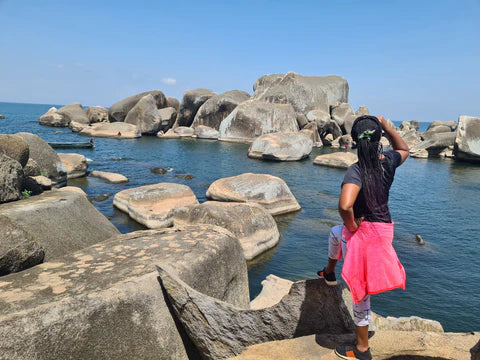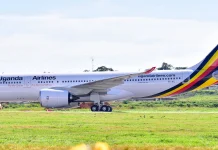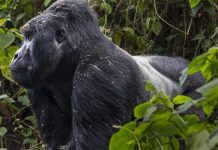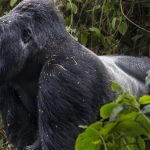Dolwe Island rock art, also known as Lolwe or Lolui Island, is situated in the eastern part of Uganda, in the northeastern region of Lake Victoria within the Busoga region, specifically in Namayingo district. Covering an area of 25 square kilometers, this island has been in existence for approximately 300-500 years.
The landscape of Dolwe Island is characterized by granite rocks and boulders, which dominate the scenery. These natural formations have long-aged rock art designs etched into them, offering a glimpse into the island’s mysterious past. Among these designs are rock paintings, carvings, engravings, and rock gongs, which serve as valuable cultural artifacts providing insights into the beliefs, customs, daily life, and history of the early inhabitants.
Although Dolwe Island’s rock art is not as widely recognized as other sites like Nyero Rock Point, it is endowed with unique archaeological features that contribute to our understanding of the island’s heritage.
Dolwe Island boasts a unique feature as it has thousands of ground depressions carved into its granite slabs. These intricate carvings, often found in remote and inaccessible locations, suggest a ritual or spiritual significance rather than a purely practical one.
Despite its mystical charm, Dolwe Island is home to a community of approximately 10,000 people, with half residing in the town of Golofa. The island’s rugged terrain lacks roads and vehicles, but skilled Boda boda riders navigate sandy paths with ease. Fishing is the primary economic activity, with Nile perch and tilapia being the prized catches in Lake Victoria’s waters.
Standing on the shores of Dolwe Island, overlooking Lake Victoria’s vast expanse, one feels a profound sense of tranquility. The calm blue waters, adorned with sails, offer a peaceful retreat from the mainland’s hustle and bustle.
History of Dolwe Island rock art
Dolwe Island, nestled in the northeastern corner of Lake Victoria within the Busoga region, holds a rich history dating back to the early 20th century. While the Basoga people, native to the region, did not settle on the island due to their lack of fishing traditions, it became home to various communities over the years.
According to oral history, the first inhabitants of Dolwe Island were the Bavuma people from Buvuma Island in 1904. They sought refuge on Dolwe Island after being chased from Buvuma due to a conflict with their king, Kabaka Daudi Chwa II of Buganda. This relocation was part of a broader pattern of resistance against British colonial forces, who forcibly displaced communities to areas free from the tsetse fly, which spread sleeping sickness.

Despite the initial settlement, Dolwe Island faced challenges, including outbreaks of sleeping sickness in the 1920s and 1954, leading to the evacuation of many residents. These disruptions likely contributed to the loss of oral traditions and knowledge of earlier inhabitants.
Nevertheless, Dolwe Island remains a site of cultural and natural significance, boasting rock art sites and other heritage resources. These include Bugire Site 1 (Golofa) and Kandege Site 2, documented by various researchers over the years. Excavations at Bugire 1 revealed artifacts spanning different periods of the Iron Age, shedding light on the island’s past inhabitants.
In recent years, efforts to preserve and manage Dolwe Island’s heritage have intensified. The Uganda Department of Museums and Monuments, in collaboration with organizations like TARA, conducted systematic surveys to record rock paintings, gongs, and engravings on the island. Additionally, the installation of amenities such as cemented ladders and signage aims to enhance accessibility and visitor experience while ensuring proper management and conservation.
How to access Dolwe Island rock art
Accessible via an approximately 5-hour journey by road from Uganda’s capital city, Kampala, or a swift speed boat ride from the main landing site of Bwondha, Dolwe Island offers a tranquil escape from the hustle and bustle of city life.
To reach Dolwe Island from the town of Jinja, travelers can embark on a 25-kilometer drive east towards Iganga town before turning off the highway at Musita trading center. From there, a 54-kilometer drive on a currently under-construction road leads to Mayuge district, followed by another 42 kilometers to Bwondha landing site in Namayingo district.
Once at Bwondha landing site, visitors can board a boat or canoe, depending on availability and affordability, for the journey to Dolwe Island. Private speed boats typically take around 1½ hours, while public boats, which cater to commuters traveling to various islands on the lake, may take a bit longer.
Efforts are underway to advocate for the introduction of a government ferry to facilitate easier transportation of people, goods, and services to and from the island.












